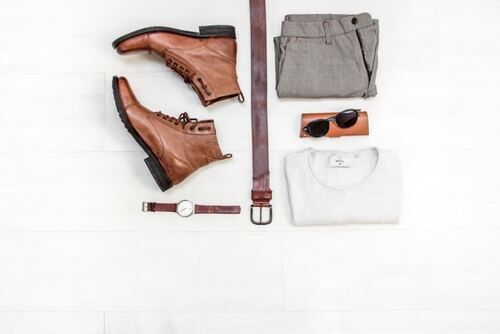In today’s competitive business environment, the way you present your products is crucial. Whether you run a custom apparel shop or a promotional merchandise business, the printing method you choose can significantly impact your brand’s image and profitability. With the rise of modern printing technologies, businesses are faced with an important decision: should they invest in direct-to-film (DTF) printing or stick with traditional methods? Both have their advantages, but the key is finding the right fit for your specific business needs.
Understanding the differences between DTF printing and traditional methods is essential. This article will break down the pros and cons of each, helping you make an informed decision. After all, choosing the right printing method can be the difference between staying ahead of your competitors and falling behind. And with high-quality machines like the Prestige XL2 Printer leading the charge in innovation, it’s worth exploring how new technology stacks up against the tried-and-true methods.
What is Direct-to-Film (DTF) Printing?
Direct-to-film printing is a relatively new process that is quickly gaining popularity, especially in the custom apparel industry. The technique involves printing a design onto a special film, which is then transferred directly onto the fabric using heat. Unlike older methods that may require pre-treatment of the fabric, DTF can work with a wide range of materials, from cotton to polyester to nylon. This flexibility is one of the reasons businesses are increasingly turning to DTF printing.
One of the standout features of DTF is its ability to produce vibrant, detailed images with exceptional color accuracy. This makes it ideal for designs that require multiple colors or intricate patterns. DTF printing is also incredibly durable, ensuring that the designs maintain their quality even after multiple washes, a crucial factor for businesses focusing on apparel or promotional items.
Traditional Printing Methods: A Quick Overview
While DTF printing is the new kid on the block, traditional printing methods like screen printing, heat transfer, and embroidery have been around for decades. Each of these methods has its own set of strengths and weaknesses, depending on the type of business and product.
Screen Printing is probably the most well-known method. It involves creating a stencil (or screen) and then using it to apply layers of ink onto the fabric. Screen printing is highly efficient for large-volume orders and is often more cost-effective for bulk production. However, it’s not the best choice for complex designs or small batches due to the time and cost of setting up screens for each color.
Heat Transfer involves printing a design onto a special paper and then using heat to transfer the image to the fabric. It’s often used for smaller orders or when the design requires vivid colors and detailed images. Like screen printing, it’s a reliable method, but the durability of the prints can sometimes be an issue, especially after repeated washing.
Embroidery, while not technically a printing method, is another traditional technique used to embellish clothing. It involves stitching designs directly onto the fabric, making it a popular choice for uniforms and branded merchandise. While embroidery offers a professional and high-quality finish, it is limited in terms of color and is not ideal for complex images.
Key Differences Between DTF and Traditional Printing Methods
When comparing DTF printing with traditional methods, several factors come into play, such as cost, durability, material compatibility, and order flexibility. Understanding these differences can help you decide which method aligns best with your business objectives.
Cost Efficiency:
DTF printing generally has a higher initial cost due to the need for specialized equipment like the Prestige XL2 Printer. However, it becomes more cost-effective for small and medium-sized orders, especially when the designs are complex and involve multiple colors. Traditional methods like screen printing are more affordable for large-volume orders, as the setup cost can be spread across many items. However, for smaller orders, the cost of creating screens and other materials can add up.
Durability:
One of the major selling points of DTF printing is its durability. The prints are resistant to cracking, peeling, and fading, even after several washes. This is an important consideration for businesses offering custom apparel, as customers expect their items to last. Traditional methods like screen printing are also durable, but they can wear out faster, especially on materials that are frequently washed or exposed to the elements.
Material Compatibility:
DTF printing shines when it comes to versatility. Whether you’re working with cotton, polyester, blends, or even synthetic materials, DTF printing works with almost any fabric. In contrast, traditional methods like screen printing are typically more limited. For example, screen printing works best on cotton but may not be as effective on synthetic fabrics without additional treatments.
Order Flexibility:
If your business caters to small-batch or custom orders, DTF printing may be the way to go. It allows you to easily print single items or small batches without a significant increase in cost. This is ideal for businesses that offer personalized items or frequently update their designs. Traditional methods, on the other hand, are better suited for large orders. If you’re producing hundreds or thousands of identical items, screen printing or heat transfer might be more cost-effective.
Pros and Cons of DTF Printing
Let’s break down the benefits and drawbacks of direct-to-film printing:
Pros:
- Vibrant, Detailed Prints: DTF printing produces high-quality images with vibrant colors and excellent detail. This is ideal for complex designs.
- Versatile: Works on a wide range of materials without needing pre-treatment.
- Durable: Prints last long and withstand frequent washing.
- Small Batch Friendly: Perfect for businesses that handle custom orders or small batches.
Cons:
- Higher Initial Costs: The equipment, such as the Prestige XL2 Printer, can be expensive upfront.
- Slower for Large Orders: DTF printing can take longer than traditional methods when handling large quantities.
Pros and Cons of Traditional Printing Methods
Now, let’s look at the traditional methods:
Pros:
- Cost-Effective for Large Orders: Screen printing and heat transfer are highly cost-effective for large batches, especially when the designs are simple.
- Proven Reliability: These methods have been used for years and are well-understood by businesses.
- Professional Appearance (Embroidery): Embroidery offers a high-end finish, making it ideal for uniforms or corporate apparel.
Cons:
- Limited Detail: Traditional methods like screen printing aren’t ideal for complex designs or detailed images.
- Material Limitations: Some traditional methods don’t work as well on synthetic or blended fabrics.
- Less Flexibility for Small Orders: Setup costs make traditional methods less viable for small or custom orders.
Which Printing Method is Right for Your Business?
Choosing between DTF and traditional printing methods comes down to the specific needs of your business. If you run a custom apparel shop or a business that frequently handles small, personalized orders, DTF printing may offer the flexibility and quality you need. Its ability to handle intricate designs and work on a variety of materials makes it ideal for businesses looking to provide unique, high-quality products.
On the other hand, if your business handles large orders with simple designs, traditional methods like screen printing may still be the best option. It’s cost-effective, reliable, and widely used in industries where high-volume production is essential.
Conclusion
In the ever-evolving world of business, having the right tools can set you apart from the competition. Direct-to-film printing and traditional methods both have their place, and understanding the strengths and limitations of each will help you make the best decision for your business. Whether you’re looking for high-quality, detailed prints or efficient, large-scale production, there’s a printing method that will align with your goals. Take the time to assess your business’s needs, and you’ll be well on your way to choosing the perfect printing solution.




